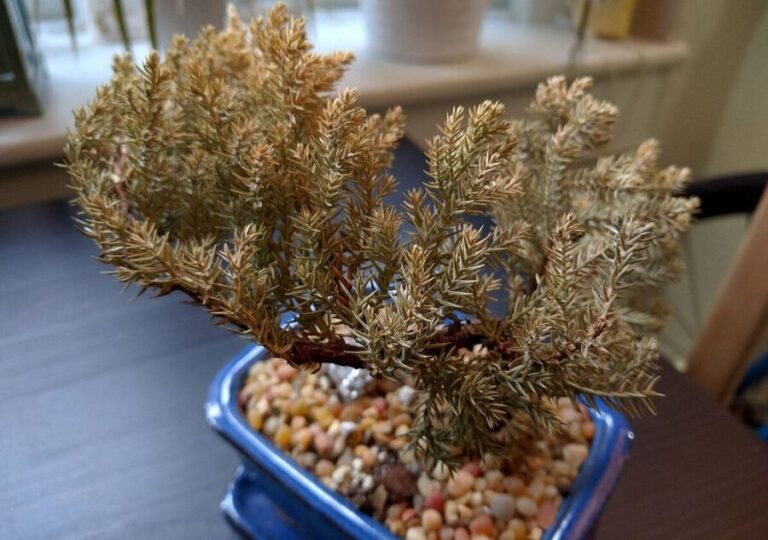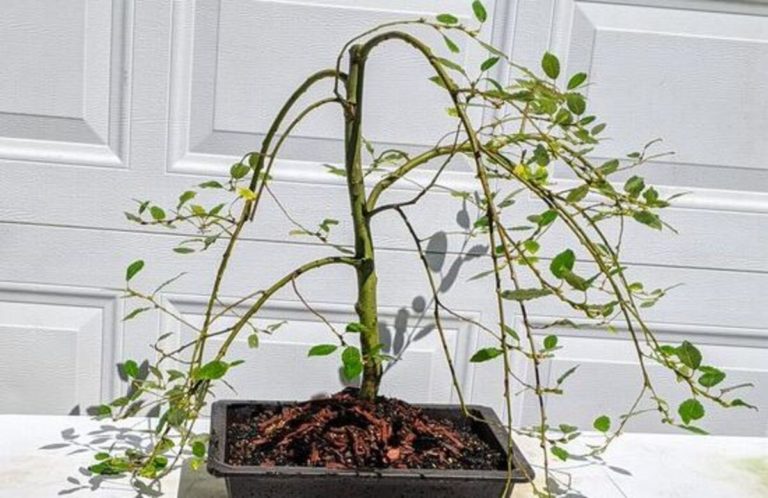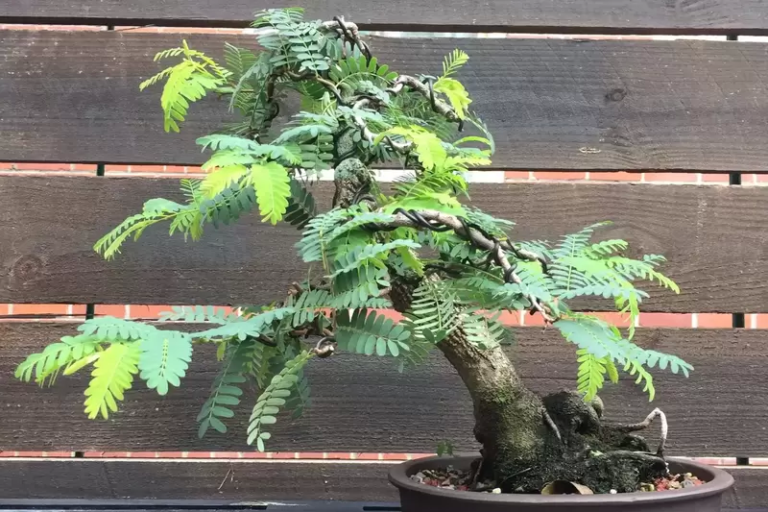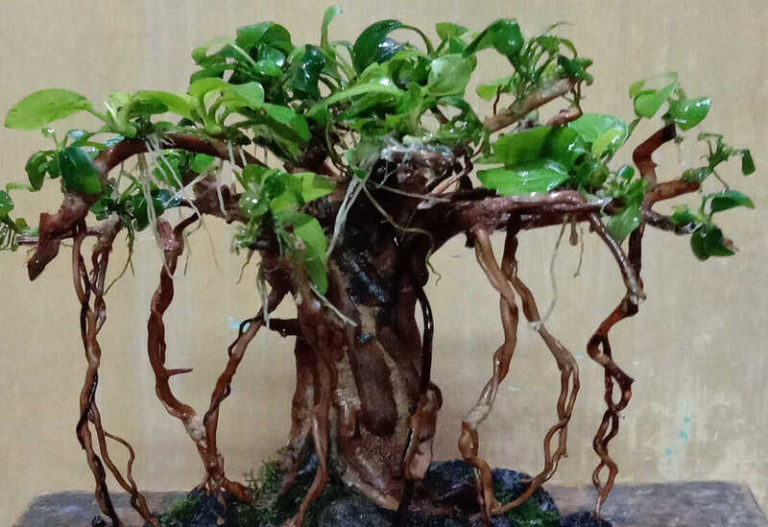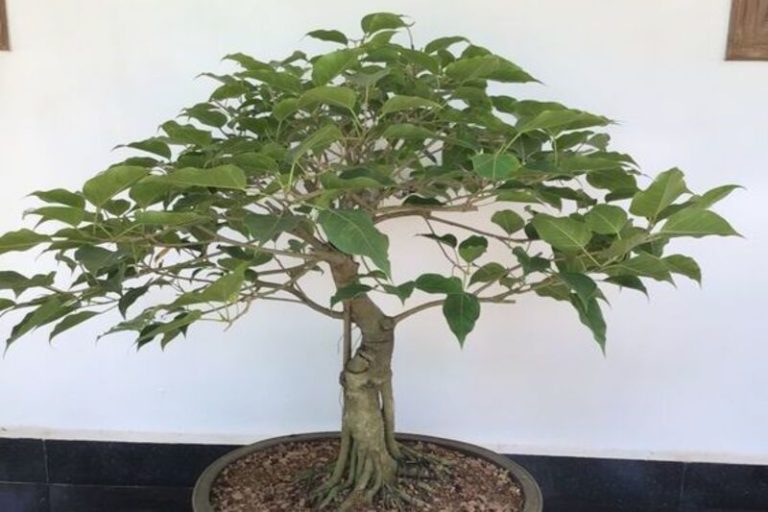ZZ Bonsai : Bringing the Art of Bonsai into Your Home
Welcome to the world of ZZ bonsai! Bonsai is a fascinating art form that involves cultivating small, beautifully shaped trees in miniature. In this article, we will explore the captivating world of ZZ bonsai, focusing on Zamioculcas zamiifolia, commonly known as ZZ plants.
Because of its distinct aesthetic and inexpensive maintenance needs, ZZ bonsai has grown in popularity. This detailed guide will help you understand and care for your ZZ bonsai with ease, whether you’re a bonsai aficionado or a newbie.
What is a ZZ Bonsai?
ZZ Bonsai refers to the practice of cultivating the ZZ plant (Zamioculcas zamiifolia) in the form of a bonsai tree. The ZZ plant is a popular houseplant known for its glossy, dark green foliage and its ability to thrive in low-light conditions.
The art of bonsai involves shaping and pruning plants to create miniature trees that capture the essence and beauty of their full-sized counterparts. ZZ Bonsai combines the unique features of the ZZ plant with the aesthetics and techniques of bonsai cultivation.
It offers bonsai enthusiasts and plant lovers an opportunity to create and appreciate the miniature beauty of a ZZ plant in bonsai form, adding a touch of nature and artistry to indoor spaces.
History and Origins of the ZZ Bonsai
The history and origins of ZZ Bonsai can be traced back to the ZZ plant (Zamioculcas zamiifolia) and the ancient art of bonsai itself.
ZZ Plant: The ZZ plant, native to Eastern Africa, particularly Zanzibar, is a resilient and low-maintenance plant that has gained popularity as a houseplant worldwide. Its botanical name, Zamioculcas zamiifolia, reflects its resemblance to another plant species, Zamia. The ZZ plant is known for its glossy, dark green leaves and its ability to thrive in a variety of light conditions, including low light.
Bonsai: The art of bonsai originated in ancient China more than a thousand years ago. It was later adopted and refined by the Japanese, who developed their own unique styles and techniques. Bonsai involves carefully shaping and training trees to create miniature versions that mimic the appearance and aesthetic of full-sized trees found in nature.
Bonsai artists utilize pruning, wiring, and other techniques to regulate the development and structure of the tree, resulting in a harmonic balance between the tree’s trunk, branches, foliage, and roots.
ZZ Bonsai: The combination of the resilient and visually appealing ZZ plant with the art of bonsai has led to the development of ZZ Bonsai. The ZZ plant’s adaptability to low-light conditions and its ability to withstand neglect make it an ideal candidate for bonsai cultivation. Bonsai enthusiasts recognized the potential of the ZZ plant to be shaped and trained into bonsai form, creating miniature versions of this popular houseplant.
The exact timeline and individuals responsible for popularizing ZZ Bonsai are not well documented, but it is the result of bonsai artists and enthusiasts experimenting with different plants and exploring new possibilities within the art form. Today, ZZ Bonsai has gained recognition and popularity among plant lovers and bonsai enthusiasts, offering a unique and captivating way to appreciate the beauty of the ZZ plant in a miniature, artful presentation.
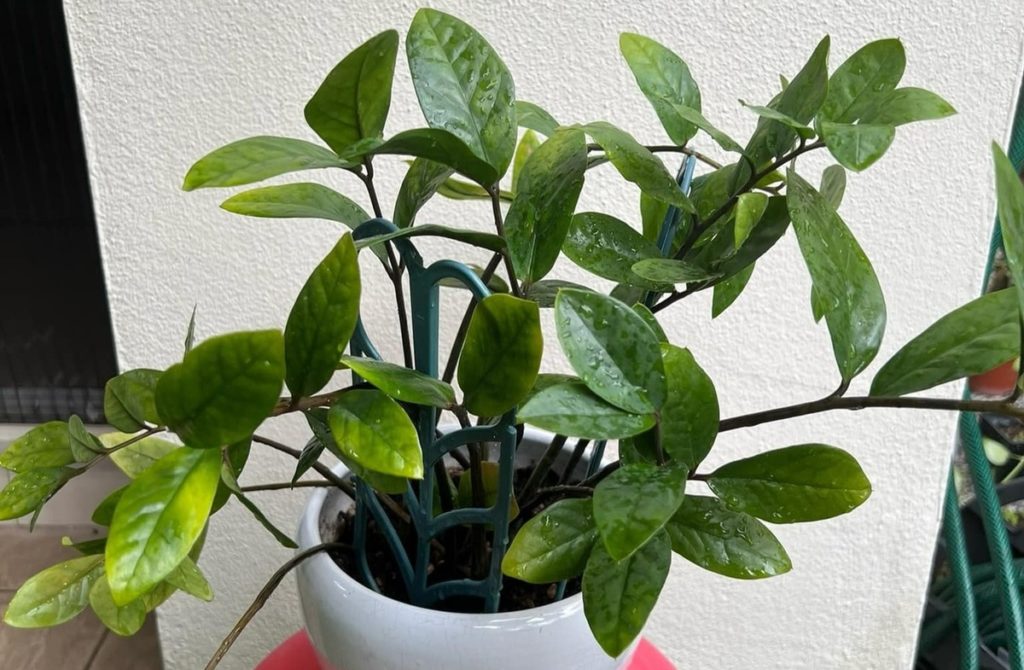
ZZ Bonsai and Their Symbolism
ZZ Bonsai, like other bonsai trees, can carry symbolic meanings and represent various aspects in different cultures. While ZZ Bonsai does not have specific traditional symbolism like certain bonsai species, it can still evoke symbolic interpretations based on its general attributes and the broader symbolism associated with bonsai.
1. Miniaturization and Permanence:
Bonsai is generally associated with the notion of miniaturization, in which a tree is meticulously grown and groomed to resemble a mature tree in nature but in a smaller form. This decrease in size represents an appreciation of nature’s beauty and essence within a constrained setting. The tiny size and complex design of ZZ Bonsai express the concept of permanence and the enduring nature of life.
2. Patience and Reflection:
Caring for bonsai, including ZZ Bonsai, requires patience and dedication. It teaches practitioners to slow down and observe the subtle changes in the tree over time. Bonsai symbolizes the value of patience, reflection, and the recognition that great things can be achieved through nurturing and continuous effort. ZZ Bonsai, with its slow growth and minimal care needs, reinforces the importance of mindfulness and patience in our lives.
3. Harmony and Balance:
Bonsai, including ZZ Bonsai, emphasizes the concept of harmony and balance between different elements of the tree, such as the trunk, branches, foliage, and pot. It represents the idealized balance between nature and human intervention. The artistry of ZZ Bonsai lies in creating a visual harmony that pleases the eye and creates a sense of tranquility. This balance and harmony extend beyond the physical appearance of the tree and can be seen as a reflection of the balance we strive for in our own lives.
4. Connection with Nature:
ZZ Bonsai, for example, provides as a reminder of our connection to the natural environment. It adds a touch of nature to inside settings and serves as a live symbol of trees’ beauty and tenacity. In our increasingly urbanized life, the presence of ZZ Bonsai may induce emotions of peace, grounding, and connectivity with the natural world.
Personal perceptions and cultural settings can both influence the metaphorical importance of ZZ Bonsai. Individual viewpoints and cultural backgrounds might influence the significance and symbolism linked to bonsai. Finally, the symbolic significance of ZZ Bonsai is determined by the personal connection and interpretation that each farmer or viewer gives to the art form.
Characteristics of the ZZ Bonsai
ZZ Bonsai, created from the ZZ plant (Zamioculcas zamiifolia), possesses several unique characteristics that make it a captivating addition to any bonsai collection. Here are some key characteristics of ZZ Bonsai:
Resilience:
The ZZ plant is noted for its adaptability and ability to survive in a variety of situations, including low light and neglect. This toughness continues over to ZZ Bonsai, making it an excellent choice for novices or those without a green thumb. It can withstand periods of dryness and recover from minor care errors.
Glossy, Dark Green Foliage:
The ZZ plant’s leaves are one of its most recognizable characteristics. They are thick, waxy, and glossy, lending an air of refinement and sheen to ZZ Bonsai. The dark green foliage creates a visually dramatic contrast to the lighter hues of the container and surrounds.
Compact Growth:
ZZ Bonsai typically exhibits a compact growth habit, which is essential for creating a miniature tree-like appearance. The branches and foliage can be pruned and shaped to achieve the desired form and balance. The compact growth makes ZZ Bonsai suitable for smaller spaces and indoor cultivation.
Low Light Tolerance:
ZZ Bonsai thrives in low light settings, making it ideal for interior applications. When compared to many other bonsai species, it can endure lower light levels, making it a great choice for settings with little natural light, such as offices or flats.
Slow Growth Rate:
ZZ Bonsai has a relatively slow growth rate, which adds to its appeal as a bonsai tree. The slower growth allows for better control and maintenance of the desired shape and size. It also means less frequent pruning and repotting compared to faster-growing bonsai species.
Longevity:
If properly cared for, ZZ Bonsai may live for many years, if not decades. It is a rewarding and long-lasting addition to a bonsai collection because of its durability. The tree develops character and maturity with time, displaying the artistry and care that went into its maintenance.
Minimal Watering Needs:
ZZ Bonsai has low water requirements and can tolerate periods of drought. This makes it suitable for those who may have a busy lifestyle or tend to forget regular watering. However, it’s important to strike a balance and avoid overwatering, as excessive moisture can lead to root rot.
Adaptability to Different Potting Mediums:
ZZ Bonsai may grow in a number of well-draining planting media, including bonsai-specific soil mixtures. This versatility provides for greater freedom in selecting the suitable potting mix based on the cultivator’s unique needs and preferences.
Overall, ZZ Bonsai is appealing as a unique and interesting bonsai tree because of its hardiness, shiny leaves, tight growth, low light tolerance, and slow growth rate. With the right care and attention, ZZ Bonsai can grow well and give you years of pleasure and beauty.
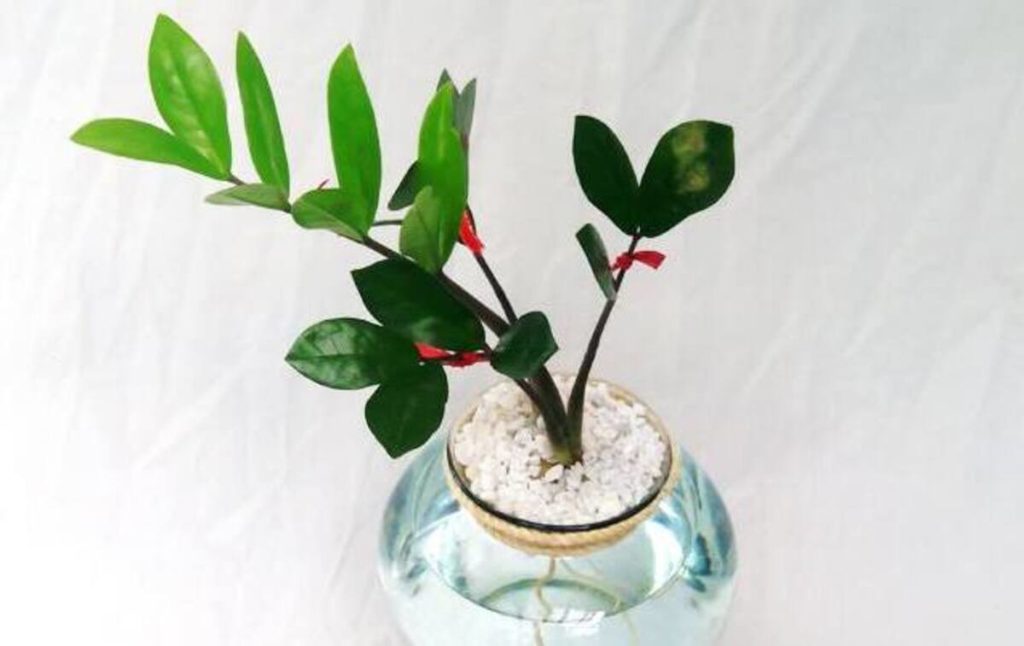
Types of ZZ Bonsai
When it comes to ZZ Bonsai, variations in the plant’s growth and shaping techniques can result in different types or styles. Here are some common types of ZZ Bonsai:
Formal Upright Style: In this style, the ZZ bonsai’s trunk grows straight up and gradually thins from the base to the top. The branches spread out evenly from the trunk, making a structure that is both orderly and balanced. This style has an old-fashioned and formal look.
Informal Upright Style: The informal upright style showcases a more organic and natural growth pattern. The trunk of the ZZ Bonsai may curve slightly or display subtle twists and turns. The branches exhibit a more irregular arrangement, adding a sense of movement and dynamism to the overall design.
Cascade Style: The cascade style is characterized by a trunk that cascades downward, resembling a waterfall. The trunk of the ZZ Bonsai curves dramatically from the base and extends below the rim of the pot. This style evokes a sense of movement and can convey a dynamic and dramatic impression.
Slanting Style: In the slanting style, the trunk of the ZZ Bonsai grows at an angle, typically leaning to one side. The branches emerge from the trunk in a balanced and harmonious manner. This style suggests resilience in the face of adversity and can create a visually interesting composition.
Group Planting Style: Group planting, also called forest or bunch planting, is when you put several ZZ bonsai trees in the same pot. This style gives the idea of a small forest or a group of trees growing close to each other. The trees are set up to look like natural groups, with different heights and places.
Literati Style: The literati style, inspired by traditional Chinese ink paintings, emphasizes a tall, slender trunk that twists and turns gracefully. The branches of the ZZ Bonsai in this style are often sparse, giving it an elegant and minimalist appearance. The literati style is associated with a sense of age, wisdom, and the beauty of simplicity.
It’s important to note that the style of a ZZ Bonsai tree is not determined solely by the plant itself but also by the techniques and decisions made by the bonsai artist. These styles provide a framework and inspiration for shaping the ZZ Bonsai, allowing for creative interpretations and personal touches.
How to Grow a ZZ Bonsai
Growing a ZZ Bonsai involves several key steps and considerations to ensure the health and development of the plant. Here’s a guide on how to grow a ZZ Bonsai:
1. Choose a Healthy ZZ Plant: Start by selecting a healthy ZZ plant as the foundation for your bonsai. Look for a plant with vibrant green foliage, well-developed roots, and a balanced shape. Ensure that it is free from pests or diseases.
2. Select a Suitable Pot: Choose a pot that is proportionate to the size of your ZZ plant. The pot should have drainage holes to prevent waterlogging. A shallow and wide pot is typically preferred for bonsai cultivation, as it allows for better root spread and development.
3. Prepare the Potting Mix: Create a well-draining potting mix suitable for ZZ Bonsai. A recommended mix is a combination of regular potting soil and materials like perlite or sand to improve drainage. Avoid using heavy or compact soil that can retain excessive moisture.
4. Repotting the ZZ Plant: If your ZZ plant is already potted, carefully remove it from its current container and gently separate the roots. Trim any damaged or excessively long roots. Place the plant in the new bonsai pot, ensuring that it is centered and at the desired angle. Fill the pot with the prepared potting mix, gently firming it around the roots.
5. Positioning and Light Requirements: ZZ Bonsai prefers indirect or low-light conditions. Place your bonsai near a window where it receives bright, filtered light, but avoid direct sunlight, which can scorch the leaves. Rotate the bonsai periodically to ensure even light exposure and balanced growth.
6. Watering and Humidity: Water your ZZ Bonsai thoroughly but infrequently. Allow the soil to dry out slightly between watering to prevent overwatering and root rot. ZZ plants are drought-tolerant, so it’s better to submerge than overwater. Maintain average indoor humidity levels, as ZZ Bonsai does not require specific humidity adjustments.
7. Pruning and Shaping: Regular pruning helps maintain the desired shape and size of your ZZ Bonsai. Remove any dead or yellowing leaves and trim excessive growth to promote a compact and balanced form. Use sharp, clean bonsai pruning shears for precise cuts. Additionally, wiring techniques can be applied to guide the growth and shape of branches.
8. Fertilizing: Occasionally fertilizing ZZ Bonsai during the growing season (spring and summer) is beneficial. Use a water-soluble, balanced fertilizer diluted to half the recommended dosage. Fertilizer should be applied every four to six weeks to offer critical nutrients for optimal development.
9. Monitoring and Maintenance: Monitor your ZZ Bonsai regularly for signs of pests, diseases, or any other issues. Common pests include mealybugs and spider mites. Treat infestations with a mild insecticidal soap or wipe the affected areas with a damp cloth. Maintain a clean and tidy bonsai environment to prevent pest and disease problems.
10. Patience and Observation: Growing a ZZ Bonsai requires patience and observation. Take the time to observe your bonsai, adjusting your care routine as needed. Monitor the watering schedule, light conditions, and overall health of the plant. Bonsai cultivation is a journey that involves learning and adapting to the unique needs of your specific ZZ Bonsai.
By following these steps and providing the appropriate care, you can cultivate and grow a healthy and beautiful ZZ Bonsai that will bring joy and beauty to your space. Remember to enjoy the process and appreciate the artistry of nurturing a living miniature tree.
Benefits of the ZZ Bonsai
ZZ Bonsai, created from the ZZ plant (Zamioculcas zamiifolia), offers several benefits that make it a popular choice for bonsai enthusiasts and plant lovers alike. Here are some of the key benefits of ZZ Bonsai:
- Low Maintenance: ZZ Bonsai is renowned for its low maintenance requirements. The ZZ plant itself is highly adaptable and can tolerate neglect, making it an ideal choice for those with busy lifestyles or limited gardening experience. ZZ Bonsai requires minimal watering, can thrive in low-light conditions, and is generally resistant to pests and diseases.
- Indoor Adaptability: ZZ Bonsai thrives in indoor settings. It can handle low light levels, making it excellent for spaces with minimal natural light, such as offices, flats, or rooms with few windows. Its capacity to grow in indoor environments allows plant enthusiasts to experience the beauty and advantages of bonsai culture from the comfort of their own homes.
- Air Purification: ZZ Bonsai has air-purifying properties, just like its progenitor plant. It has been discovered to remove airborne toxins such as xylene, toluene, and benzene, thereby enhancing interior air quality. This can have a positive effect on overall health and contribute to a healthier living environment.
- Aesthetic Appeal: ZZ Bonsai showcases the unique beauty and elegance of the ZZ plant in miniature form. Its glossy, dark green foliage adds a touch of natural beauty to any indoor space. The carefully pruned and shaped branches create a sense of artistry and craftsmanship, making ZZ Bonsai a visually appealing and aesthetically pleasing addition to home décor or bonsai collections.
- Stress Reduction: Indoor plants, such as ZZ Bonsai, have been associated to stress reduction and enhanced mental well-being. Plants have been demonstrated in studies to enhance relaxation, boost attention, and lessen feelings of worry. ZZ Bonsai’s relaxing and soothing impact can help to a more quiet and harmonious home atmosphere.
- Longevity: When properly cared for, ZZ Bonsai can live for many years, even decades. This longevity allows bonsai enthusiasts to develop a long-lasting relationship with their plants, witnessing their growth and maturity over time. The enduring nature of ZZ Bonsai adds to its value as a cherished and meaningful part of one’s personal or bonsai collection.
- Mindfulness and Connection with Nature: Cultivating ZZ Bonsai encourages mindfulness and a deeper connection with nature. The practice of caring for a living miniature tree requires attentiveness, patience, and a sense of presence. It provides an opportunity to slow down, observe growth patterns, and appreciate the beauty of nature in a small-scale representation.
ZZ Bonsai combines the ease of care of the ZZ plant with the artistry and beauty of bonsai cultivation. It offers a rewarding and fulfilling experience, bringing the benefits of greenery and bonsai aesthetics into indoor spaces while requiring minimal effort and attention.
Displaying and Showcasing the ZZ Bonsai
Displaying and showcasing your ZZ Bonsai is an opportunity to highlight its beauty and create a visually pleasing focal point in your space. Here are some tips on how to effectively display and showcase your ZZ Bonsai:
Choose an Appropriate Location: Select a location that provides suitable lighting conditions for your ZZ Bonsai. While ZZ plants can tolerate low light, placing them near a window with bright, indirect light is ideal. Avoid direct sunlight, as it can scorch the leaves. Consider the overall aesthetic of the room and choose a spot that allows the ZZ Bonsai to stand out and be appreciated.
Select a Complementary Display Stand or Pot: The choice of display stand or pot can enhance the overall presentation of your ZZ Bonsai. Opt for a pot that complements the style and size of your bonsai tree. Traditional ceramic pots, wooden stands, or stone slabs can add a touch of elegance and create a harmonious look. Ensure the pot has drainage holes to prevent water accumulation.
Consider the Surroundings: Pay attention to the surroundings of your ZZ Bonsai to create an appealing display. Arrange the bonsai in a clutter-free area, allowing it to be the focal point. Consider the color scheme and textures of the room décor to create a visually pleasing composition. The simplicity and elegance of a bonsai tree can be enhanced by a clean and uncluttered backdrop.
Use Display Accents: Add small ornaments or decorative elements to match your ZZ Bonsai. This could be done with rocks, dolls, or small pebbles that are put on top of the dirt. Make sure that these details don’t take away from or overpower the beauty of the tree. Instead, they should add to the overall look.
Consider Rotation: Rotate your ZZ Bonsai periodically to ensure even growth and exposure to light. This helps maintain balanced development and prevents the bonsai from leaning to one side. Rotating the bonsai also allows you to appreciate it from different angles and its overall shape and design.
Regular Maintenance: Keep your ZZ Bonsai well-maintained to ensure its health and attractiveness. Regularly remove any yellowing or dead leaves and prune back excessive growth to maintain the desired shape and form. Clean the foliage gently with a soft cloth or brush to remove dust and keep the leaves glossy.
Showcase at Bonsai Exhibitions or Shows: Consider taking part in bonsai exhibits or events to expose your ZZ Bonsai to a larger audience. These gatherings allow you to meet other bonsai lovers, share knowledge, and get comments on your bonsai gardening abilities. It’s also an opportunity to admire the beauty of other bonsai plants and learn from seasoned gardeners.
Remember, displaying and showcasing your ZZ Bonsai is a personal expression of your appreciation for the art of bonsai. Experiment with different arrangements, display options, and accessories to find the style that best suits your preferences and enhances the beauty of your ZZ Bonsai.
Styling and Design of ZZ Bonsai
The styling and design of ZZ Bonsai involve shaping the plant to create a miniature tree that reflects the desired aesthetic and captures the essence of bonsai. Here are some key considerations and techniques for styling and designing your ZZ Bonsai:
1. Trunk Selection: Choose a ZZ plant with a trunk that exhibits desirable characteristics such as thickness, taper, and movement. The trunk serves as the foundation of the bonsai design and should have an appealing shape and form.
2. Pruning and Branch Development: Regular pruning is essential for shaping the branches and achieving the desired design. Trim back branches to maintain the overall balance and proportion of the bonsai. Remove any crossing branches or branches that disrupt the intended silhouette. Pruning encourages ramification, the development of smaller branching structures, which adds to the refinement of the design.
3. Wiring: Wiring is a technique used to guide the growth and shape of branches. Copper or aluminum wire is wrapped around branches to gently bend and position them in the desired direction. The wiring should be done carefully, avoiding excessive pressure that could damage the branches. As the branches thicken, the wire should be removed to prevent it from cutting into the bark.
4. Styling Techniques: Several styling techniques can be applied to create specific bonsai designs:
- Formal Upright Style: In this style, the trunk grows vertically with evenly spaced branches radiating from it. Maintain a straight and upright trunk by pruning and shaping branches to create a symmetrical and balanced structure.
- Informal Upright Style: This style emphasizes a more natural, organic form. The trunk may have gentle curves or twists, and branches are arranged in a less rigid pattern, reflecting a more relaxed and natural growth pattern.
- Cascade Style: The stem drops downhill below the lip of the pot in the cascade style, mimicking a waterfall. The stem should be curved, and the branches should be clipped and groomed to improve the cascading appearance.
- Slanting Style: The slanting style features a trunk that grows at an angle, leaning to one side. The branches radiate outward from the trunk, mirroring the slanted angle. This style conveys a sense of movement and resilience.
- Literati Style: Inspired by traditional Chinese ink paintings, the literati style emphasizes a tall, slender trunk that twists and turns gracefully. The branches are often sparse, and the overall design exudes a sense of simplicity and elegance.
5. Patience and Balance: Styling a ZZ Bonsai requires patience and a keen eye for balance. Consider the visual weight and distribution of branches, ensuring that the design is harmonious and visually appealing from all angles. Take your time and make small adjustments as needed to achieve the desired shape and form.
Remember that styling and designing a ZZ Bonsai is a creative process that allows you to express your artistic vision. It’s important to study bonsai aesthetics, seek inspiration from other bonsai designs, and continuously refine your skills through observation and practice. With time and dedication, you can create a captivating ZZ Bonsai that reflects your unique style and appreciation for the art of bonsai.
How to Care for and Maintain a ZZ Bonsai
Caring for and maintaining a ZZ Bonsai is essential to ensuring its health, vitality, and longevity. Here are some important care guidelines to follow:
Watering:
- ZZ Bonsai prefers slightly dry conditions, so allow the top inch (2.5 cm) of the soil to dry out between waterings.
- Water thoroughly but infrequently, ensuring that excess water drains out of the pot. Avoid overwatering, as ZZ plants are susceptible to root rot.
- Adjust the watering frequency based on environmental factors like temperature, humidity, and the size of the pot. During cooler months, reduce watering to accommodate slower growth.
Light and Temperature:
- ZZ Bonsai can tolerate a wide range of light conditions, including low light. Place it in a location that receives bright, indirect light. Avoid direct sunlight, as it can scorch the leaves.
- ZZ Bonsai thrives in average room temperatures between 65 and 75°F (18 and 24°C). It can tolerate slightly cooler or warmer temperatures, but avoid exposing it to drafts or extreme temperature fluctuations.
Humidity:
- ZZ Bonsai can adapt to average room humidity levels and does not require specific humidity adjustments. However, it can benefit from occasional misting or placing a tray of water near the plant to provide a slightly higher humidity environment, especially in dry indoor conditions.
Fertilizing:
- Feed your ZZ Bonsai during the growing season (spring and summer) with a balanced, water-soluble fertilizer diluted to half the recommended strength.
- Apply the fertilizer every four to six weeks to provide essential nutrients for healthy growth. Avoid over-fertilizing, as it can lead to fertilizer burn or excessive leaf growth.
Pruning and Trimming:
- Regularly remove yellowing, damaged, or dead leaves by gently plucking or cutting them off at the base. This helps maintain a clean and neat appearance.
- Prune back excessive growth to maintain the desired shape and size of your ZZ Bonsai. Trim branches and shoots that disrupt the overall balance and form of the bonsai.
Pests and Diseases:
- ZZ Bonsai is usually resistant to pests and diseases. Keep an eye out for typical indoor pests such as mealybugs and spider mites. If they are found, treat them with insecticidal soap or wipe the afflicted areas with a moist cloth.
- Ensure proper air circulation around the bonsai to prevent the development of fungal diseases.
Soil and Repotting:
- ZZ Bonsai prefers well-draining soil. Use a potting mix specifically formulated for bonsai or create a mix by combining regular potting soil with materials like perlite or sand to improve drainage.
- Repot your ZZ Bonsai every two to three years, preferably in spring. Repotting helps refresh the soil, prune the roots, and provide space for growth. Choose a pot that is slightly larger than the previous one, ensuring it has drainage holes.
Maintenance:
- Keep the foliage of your ZZ Bonsai clean by wiping it gently with a soft cloth or using a soft brush to remove dust. This helps maintain the glossy appearance of the leaves and allows for better light absorption.
- Monitor your bonsai regularly for signs of stress, such as yellowing leaves, wilting, or pest infestations. Promptly address any issues that arise to prevent further damage.
- You can ensure the health and vigor of your ZZ Bonsai by following these care instructions. Remember to keep a careful eye on your bonsai, change care procedures as needed, and enjoy the gratifying experience of caring for this lovely little tree.
ZZ Bonsai Care Sheet
| Aspect | Care Tips |
| Watering | Allow the top inch (2.5 cm) of soil to dry out between watering. Water thoroughly but infrequently, ensuring proper drainage. Avoid overwatering to prevent root rot. |
| Sunlight | Place in bright, indirect light. Avoid direct sunlight to prevent leaf scorching. |
| Temperature | Maintain average room temperatures of 65-75°F (18-24°C). Avoid exposing to drafts or extreme temperature fluctuations. |
| Humidity | ZZ Bonsai can adapt to average room humidity levels. Occasional misting or placing a tray of water nearby can provide slightly higher humidity if needed. |
| Fertilization | Feed during the growing season with a balanced, diluted water-soluble fertilizer (half the recommended strength). Apply every 4-6 weeks for essential nutrients. |
| Pruning and Trimming | Regularly remove yellowing, damaged, or dead leaves. Trim excessive growth to maintain shape and balance. Prune branches that disrupt the overall form. |
| Wiring and Styling | Wiring can be applied to guide branch growth and shape. Follow proper wiring techniques to avoid damaging branches. Style according to desired bonsai design. |
| Repotting | Repot every 2-3 years in well-draining soil. Use a slightly larger pot with drainage holes. Refresh soil, prune roots, and provide space for growth. |
| Pest and Disease Control | Monitor for pests like mealybugs or spider mites. Treat affected areas with appropriate insecticidal soap or wipe with a damp cloth. Maintain good airflow to prevent fungal diseases. |
| Winter Care | ZZ Bonsai is tolerant of lower temperatures, but avoid extreme cold drafts. Reduce watering frequency during the dormant season. Maintain stable indoor temperatures. |
| Regular Maintenance | Keep foliage clean by gently wiping with a soft cloth. Observe for signs of stress or issues and address promptly. Enjoy the process of caring for your ZZ Bonsai! |
This care sheet table provides a quick reference guide for the various aspects of ZZ Bonsai care, along with corresponding tips to ensure its well-being.
Conclusion
ZZ bonsai provides an entertaining introduction to the world of bonsai for both novices and aficionados. You may enjoy the beauty and elegance of ZZ bonsai in your home or garden by following the basic maintenance requirements described in this article. Remember to monitor and learn from your plant, and to adjust your care regimen as necessary. Enjoy the process while your ZZ bonsai grows!
FAQ
Q: What is a ZZ Bonsai?
A: ZZ Bonsai is a miniature version of the ZZ plant (Zamioculcas zamiifolia) that is cultivated and shaped to resemble a bonsai tree. It combines the unique characteristics of the ZZ plant with the artistry and aesthetics of bonsai cultivation.
Q: How do I care for a ZZ Bonsai?
A: Care for a ZZ Bonsai by providing it with bright, indirect light, watering it when the top inch of soil is dry, maintaining average room temperatures, and avoiding overwatering. Prune and trim the plant as needed, fertilize during the growing season, and repot every 2-3 years. Regularly monitor for pests and diseases, and provide appropriate winter care.
Q: Can I create my own ZZ Bonsai?
A: Yes, you can create your own ZZ Bonsai by selecting a healthy ZZ plant, pruning and shaping it to achieve the desired bonsai form, and following proper care and maintenance techniques. It requires patience, knowledge of bonsai styling, and regular attention to the plant’s needs.
Q: How tall does a ZZ Bonsai grow?
A: The height of a ZZ Bonsai depends on the specific styling and pruning techniques applied. With regular maintenance and appropriate care, a ZZ Bonsai can be trained to remain compact and small in size, usually ranging from a few inches to a foot or two in height.
Q: Where should I place my ZZ Bonsai?
A: ZZ Bonsai prefers direct, bright light. Place it somewhere that gets moderate to strong light, but not direct sunshine, which might burn the leaves. It is light-sensitive and may grow in low-light environments such as your home or workplace.
Q: How often should I water my ZZ Bonsai?
A: Water your ZZ Bonsai when the top inch of soil feels dry. ZZ plants prefer slightly dry conditions, so allow the soil to dry out partially between watering. Avoid overwatering, as ZZ plants are susceptible to root rot.
Q: Is a ZZ plant a bonsai?
A: No, a ZZ plant is not a bonsai. However, it can be trained and shaped into a bonsai form through pruning and styling techniques.
Q: What are the disadvantages of ZZ plant?
A: The disadvantages of ZZ plants include their toxic nature if ingested, the potential for skin irritation or allergies when handling the plant, and their slow growth rate compared to some other plants.
Q: Is ZZ plant good for the house?
A: Yes, ZZ plants are popular houseplants. They are known for their ability to thrive in low light conditions, adaptability to different environments, and air-purifying qualities. They can add a touch of greenery and beauty to indoor spaces.
Also Read:



